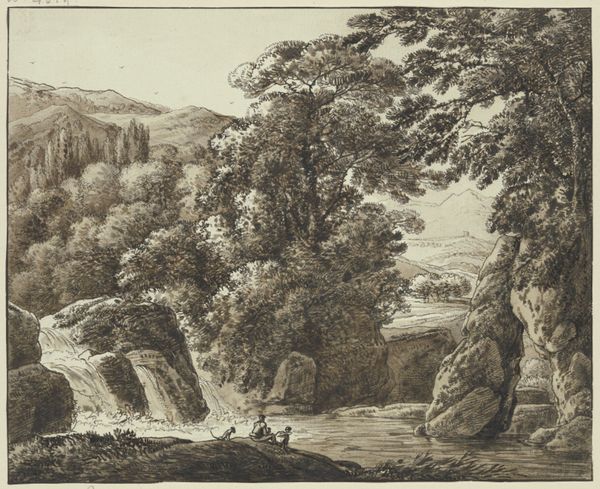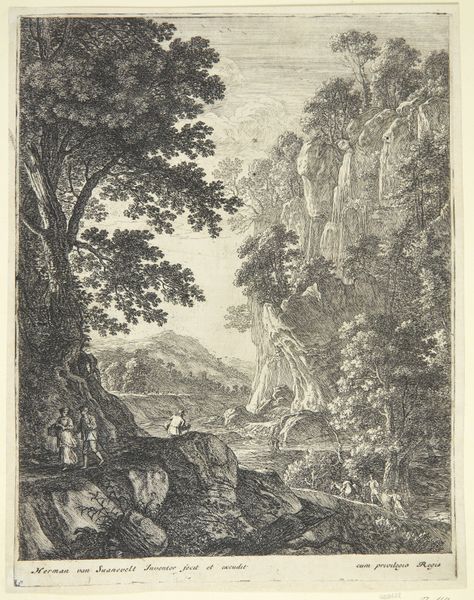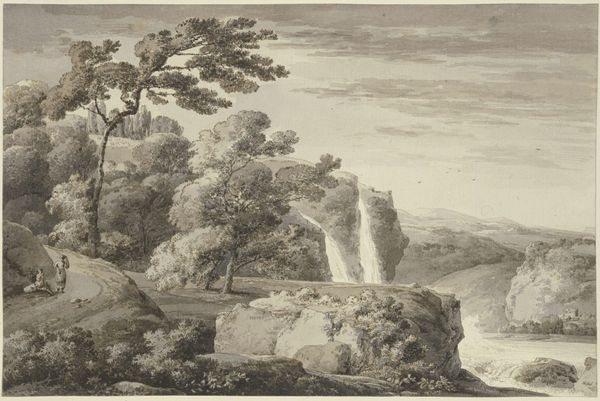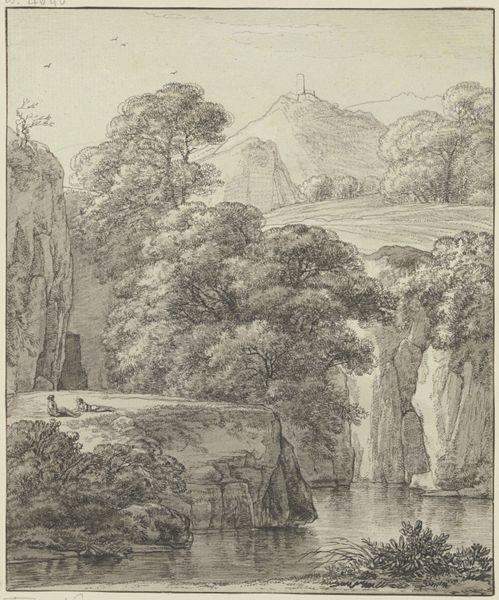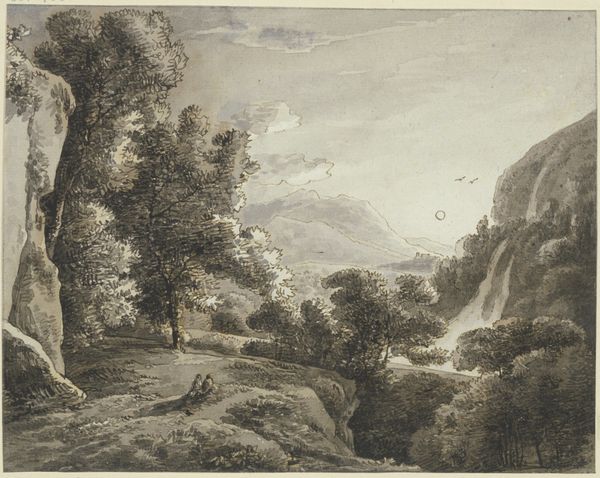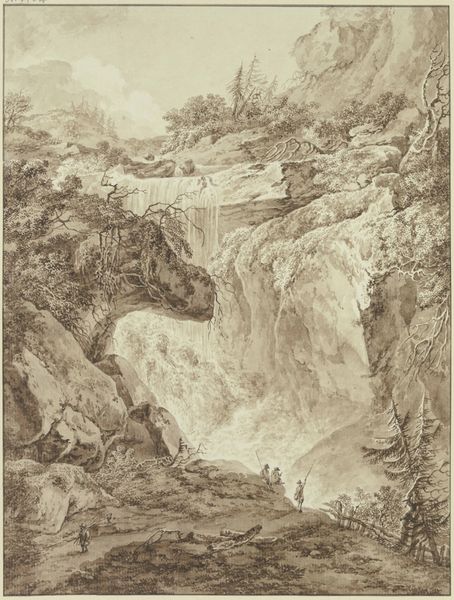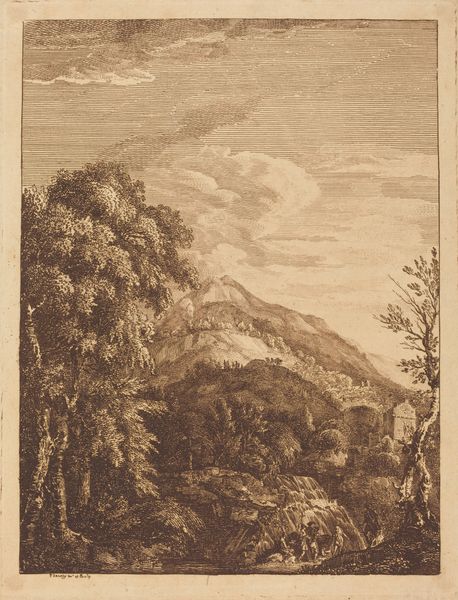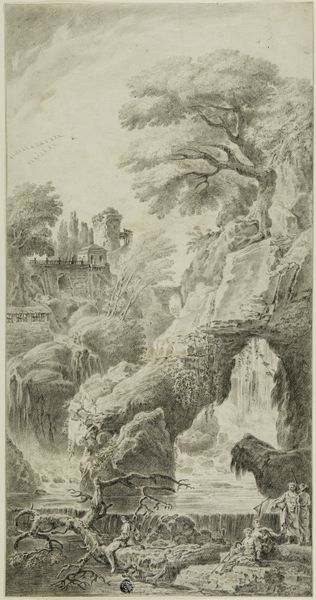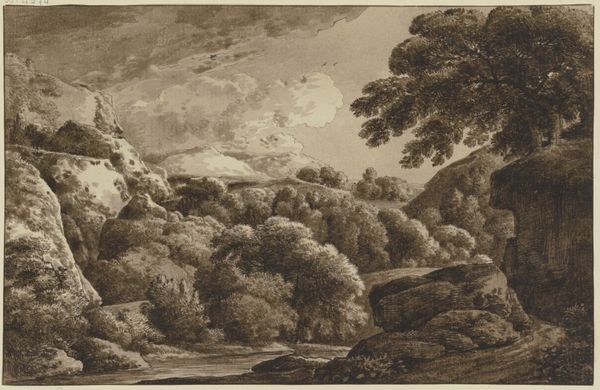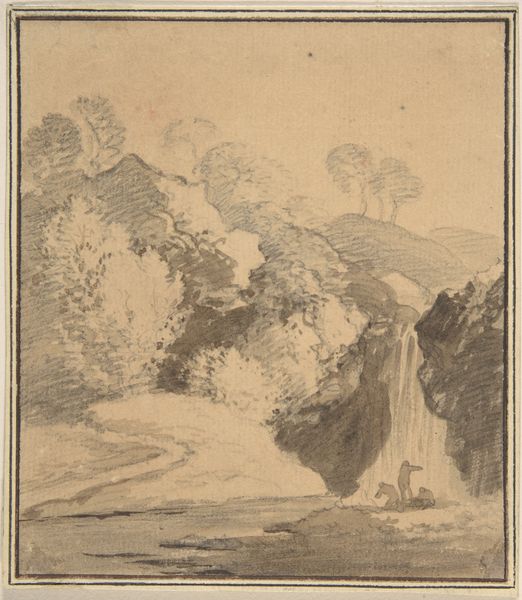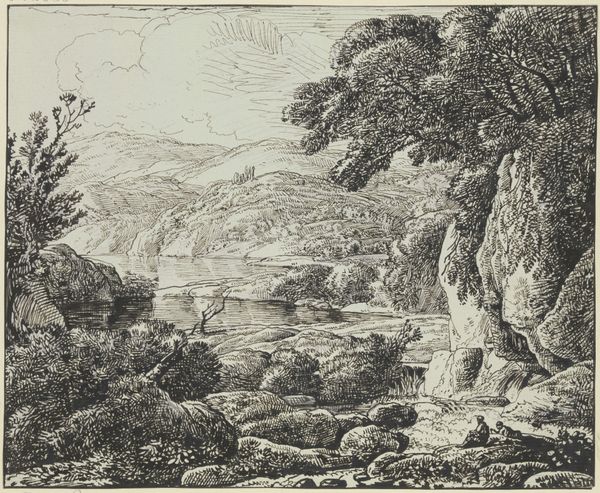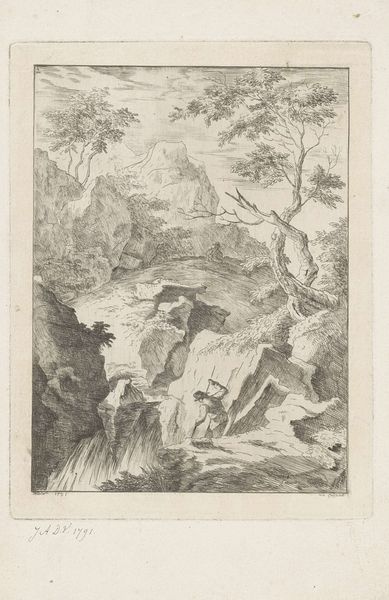
drawing, etching, ink, pencil
#
drawing
#
neoclassicism
#
etching
#
landscape
#
etching
#
ink
#
pencil drawing
#
pencil
#
history-painting
Copyright: Public Domain
Editor: This is "Mountainous Landscape with Waterfall and Antique Ruins" by Franz Kobell, made with pencil, ink and etching. I'm struck by the serenity, but also the grandeur, of nature depicted here. What do you see in this piece? Curator: I see a deliberate juxtaposition, and indeed a tension, between nature and culture. Note how the cascading waterfall and rugged landscape are framed by the remnants of classical architecture. Think about the period. Neoclassicism arose during a time of revolutions. Editor: Revolutions? I'm not sure I follow the connection... Curator: This wasn't just about art imitating antiquity. It reflected societal aspirations. Neoclassicism promoted reason, order, and civic virtue, acting as a visual counterpoint to perceived aristocratic decadence or societal unrest. Notice, though, the ruins aren’t pristine temples but decaying structures overtaken by vegetation, subtly challenging any notion of enduring imperial power or perfection. This depiction almost acknowledges an inherent instability within such social structures. Where do you think the artist situates humanity? Are the people integrated into nature? Editor: I guess you can spot some figures on the top left; there are very few, like shepherds or travelers, but it almost gives a sense of human presence while acknowledging the larger scope of the surrounding environment. This balance provides a humbling sense of insignificance when looking at something timeless like landscape, time and nature. Curator: Precisely. The relatively small size of human presence compared to the vastness of nature hints at that. Artworks like these are never just about what they depict. They invite us to question power dynamics, class structures, and even our own relationship with the world around us. They can embody cultural critiques, especially considering that the dominant Neoclassical artistic views can be rooted in power, empire, colonialism, and identity. Editor: I see. The ruins aren't just decorative; they provoke questioning! It definitely encourages me to think about art's role in social discourse. Curator: Indeed, and hopefully, to seek and provoke that discourse in contemporary society too!
Comments
No comments
Be the first to comment and join the conversation on the ultimate creative platform.
